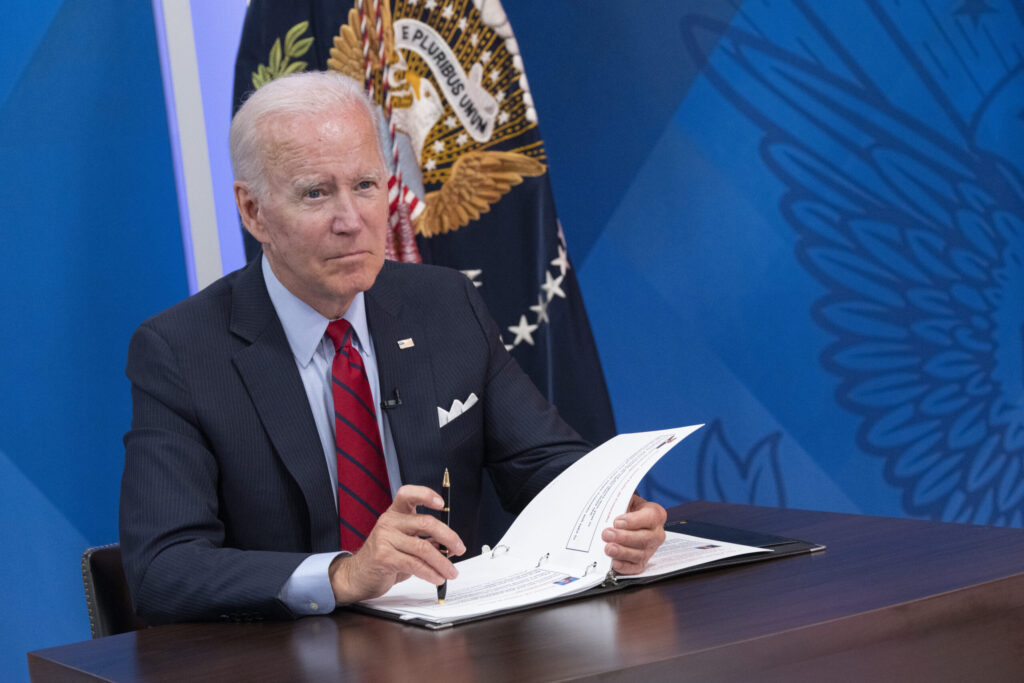
Amid an ongoing court battle to lower or cancel student debt, the Biden administration is using its regulatory authority to reduce the debt burden for low- and middle-income students, according to administration officials.
Under the proposed new rules, which would have to go through the regulatory process, individuals making $30,500 a year – meaning those making $15 an hour – would not have to make monthly payments on their federal student loans. The most generous programs now for borrowers in an income-driven repayment plan max out at $20,400 annual income for a single individual, officials said.
Further, federal loan borrowers would need to pay a maximum of just 5% of their discretionary income for monthly undergraduate loan repayments – about half the rate typically charged now, the administration said in a fact sheet explaining the new rules. The maximum for graduate student loans would remain at 10% of discretionary income under the current Revised Pay As You Earn (REPAYE) plan.
The new rules would be amendments to the REPAYE plan, so the administration is moving to change the terms through the regulatory process. That does not mean the rules will be finalized or that they will not be challenged in court, as President Joe Biden’s student loan cancellation program has been.
“Student debt has become a dream-killer,” Education Secretary Miguel Cardona told reporters in a conference call Monday evening. “It threatens Americans’ ability to compete globally,” keeping college graduates from buying a home, starting a business or having a family, he said, adding that before the pandemic, more than 1 million borrowers defaulted on their student loans each year.
The proposed rules would also pare down the crippling interest payments of some borrowers. Currently, the Education Department estimates, up to 70% of borrowers on income-driven repayment plans see their debt balances grow even as they are paying off their loans, since they can only afford a monthly payment that is less than the accrued interest.
That means the principle remains and the interest continues to accumulate. Under the proposed new rules, any payment would first be applied to the interest, but any additional interest would not be charged.
The new rules would also limit lifetime payments for eligible borrowers. The shortened path to loan forgiveness would be especially helpful to low- and middle-income borrowers, community college students and borrowers who work in public service, the Education Department said.
Biden, who pledged during his campaign to ease the student debt crisis, has run into roadblocks with Congress, which has not provided the funding he wants for student aid, and the courts, which have put a hold on his executive action to cancel up to $20,000 in student debt.
The Supreme Court is scheduled to hear arguments on Biden’s student loan cancellation program next month. The proposed new rules detailed by Cardona and other administration officials Monday evening would be in addition to the debt cancellation program, an administration official explained.
Biden, who has said he “intends” to run for reelection but has yet to announce his decision formally, has been under immense pressure to deliver on policies and promises to younger voters – many of whom initially preferred more left-leaning candidates in the 2020 primary.
In the 2022 midterms, young voters cast ballots overwhelmingly in favor of Democrats, helping to secure a narrow Democratic majority in the Senate and limit Democratic losses in the House.
The 80-year-old Biden has sought to energize young voters as he prepares a run for a second term, and student loan debt relief is a dominant issue among millennial and Gen Z voters.
The Education Department estimated that future cohorts of borrowers would see their payments per dollar borrowed drop by 40%. The typical graduate of a four-year university would save nearly $2,000 a year compared to the current REPAYE plan.
A first-year teacher with a bachelor’s degree would save more than $17,000 in total payments while pursuing Public Service Loan Forgiveness – a two-thirds reduction in what they would pay in total under REPAYE, the administration said, and 85% of community college borrowers would be debt-free within 10 years.
The rules propose automatically enrolling delinquent borrowers in an income-driven repayment plan. The Education Department will also hold educational institutions accountable, administration officials said, warning students about “low financial value” institutions – meaning those where paying for a college degree would leave the student worse off financially than never having attended college at all.
“It’s time to name names,” a senior administration official told reporters.
Source: US News
